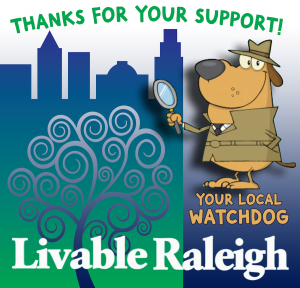It’s Election Season in NC as primaries are underway right now!
(But, not for Raleigh City Council)
In March City Council is going to hear a report from staff about the possibilities for reforming the city’s election process.
In 2021, the previous city council changed Raleigh’s elections from the fall of odd years to the fall of even years. They did this behind closed doors without any input from residents. This resulted in a HUGE change to our elections. Raleigh now has a “plurality” election, meaning no candidate has to receive a majority vote to win and there is no option for a run-off election. In fact in the 2022 election only 2 of the 8 current members of City Council did receive over 50% of the vote in their elections. Read about it here: Raleigh Elections 2022
The City Council has asked the people of Raleigh twice now for their opinion on council moving to four-year terms and both times the people have said no. We’ve reported this before here: What part of NO don’t you get?
Livable Raleigh believes the City Council should do what the people told them they want.
But, if they are hell-bent on moving to four-year terms despite the views of the people, it should ONLY be done if they implement a nonpartisan primary to go with it, thus getting rid of the current “plurality” election format and ensuring we elect the members of City Council by majority vote.
If you’re the kind of reader who wants more information, we’ve detailed it all out below:
Primaries – Partisan vs Nonpartisan
What’s the difference?
A nonpartisan primary includes all candidates without regard to party afilliation. The top two vote getters move on to the general election in November. This means there will be only 2 candidates and the winner will be guaranteed to get over 50% of the vote.
A partisan primary involves running a separate primary for each party. If more than two parties run primaries, this would result in more than two candidates in the general election. In this case, the general election could still result in a winner with less than 50% of the vote and there is no opportunity for a runoff after a November election.
Can we fix this while keeping two-year terms?
Not in any practical way.
What about increasing the size of Council?
City Council has had 8 members since the 1970s
No matter what decision is made about term length, the size of City Council needs to increase for better representation.
Four-Year Terms, how does that work?
Four-year terms can be “staggered” so half of the council is elected every two years.
Four-year terms can be run using a stagger system that elects half of the council every two years. This method allows for more accountability to voters allowing voters to express their opinion of the direction of the council every two years. It also encourages some continuity because we would not replace the entire council at each election.
The mayor can be kept on a two-year term for more accountability. Durham, Chapel Hill, Carrboro, and Fuquay-Varina elect their mayors to a two-year term, but councilors to four-year terms.
We recommend running 4-year staggered term elections while keeping the mayor at a two-year term
Election Cycle 1 –
Mayor
At-Large Rep 1
4 Districts (they should not all be in the same area of the city)
Election Cycle 2 –
Mayor
At-Large Rep 2
The other 4 Districts
This allows for the most accountability to the voters.
It also eliminates the “vote for 2” process we currently use to elect At-Large councilors and will ensure they receive a majority of the vote as well.
Livable Raleigh Editorial Team
If you appreciate the kind of reporting we bring to you
|
Please donate $10 or $20, Thanks for supporting |
 |

